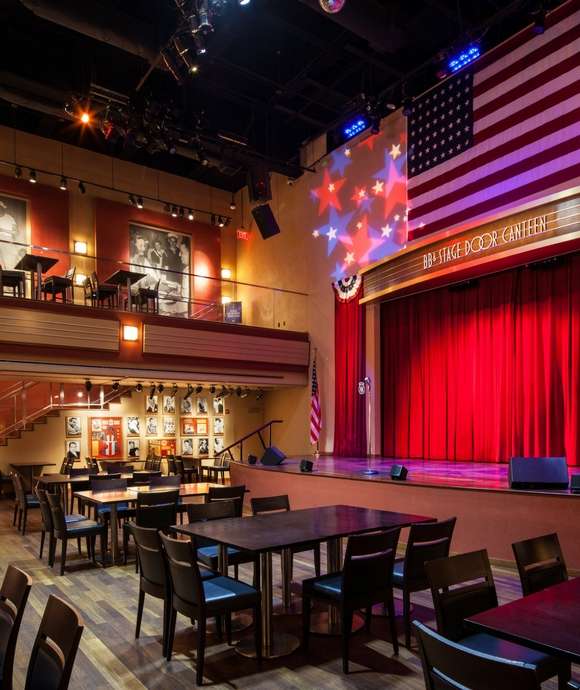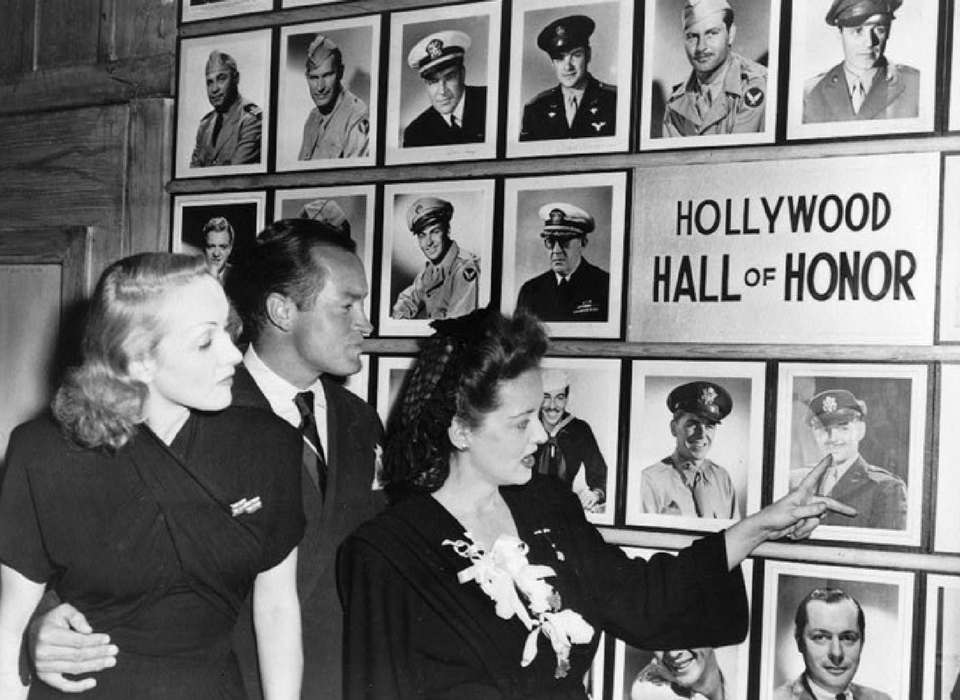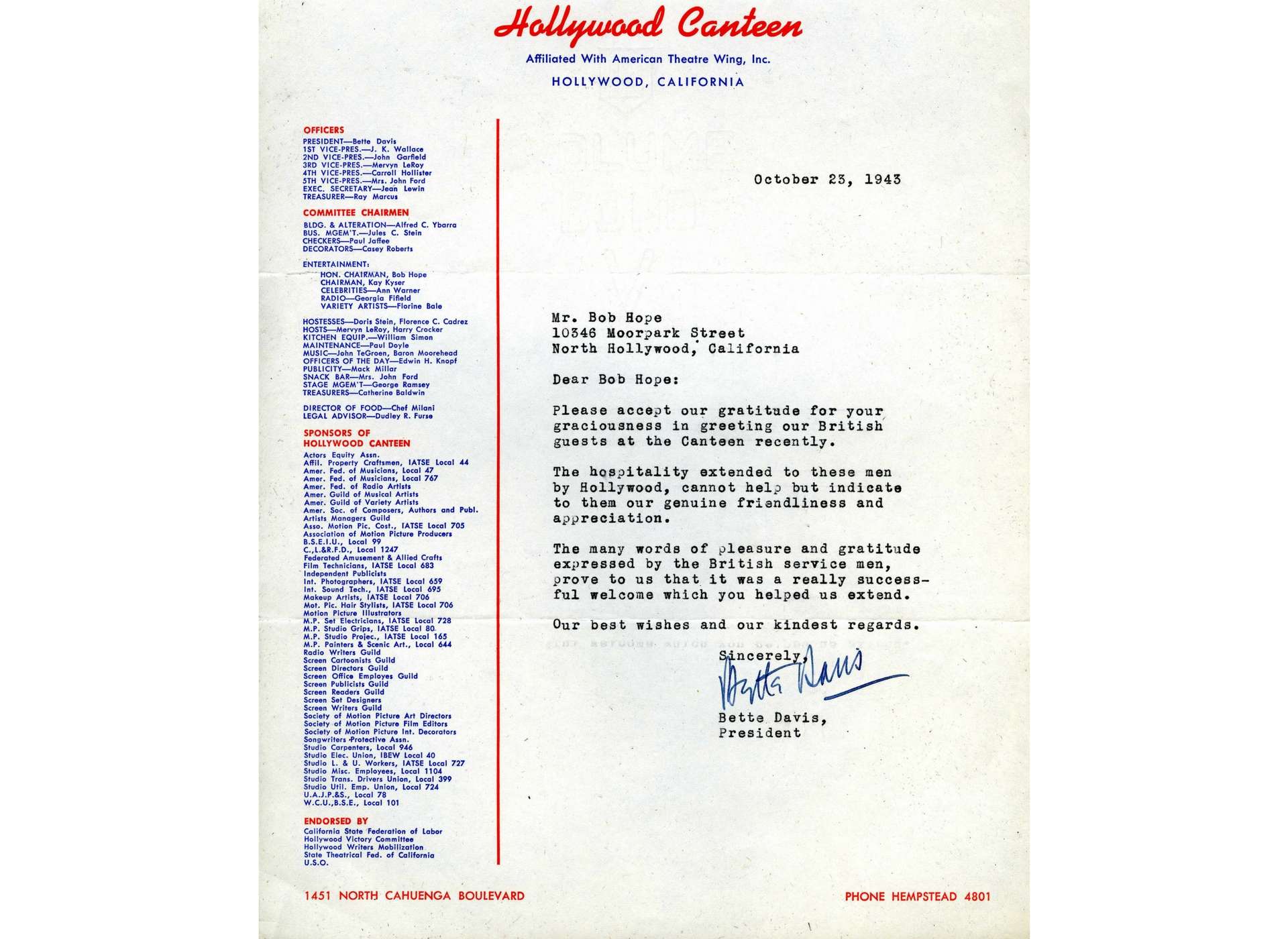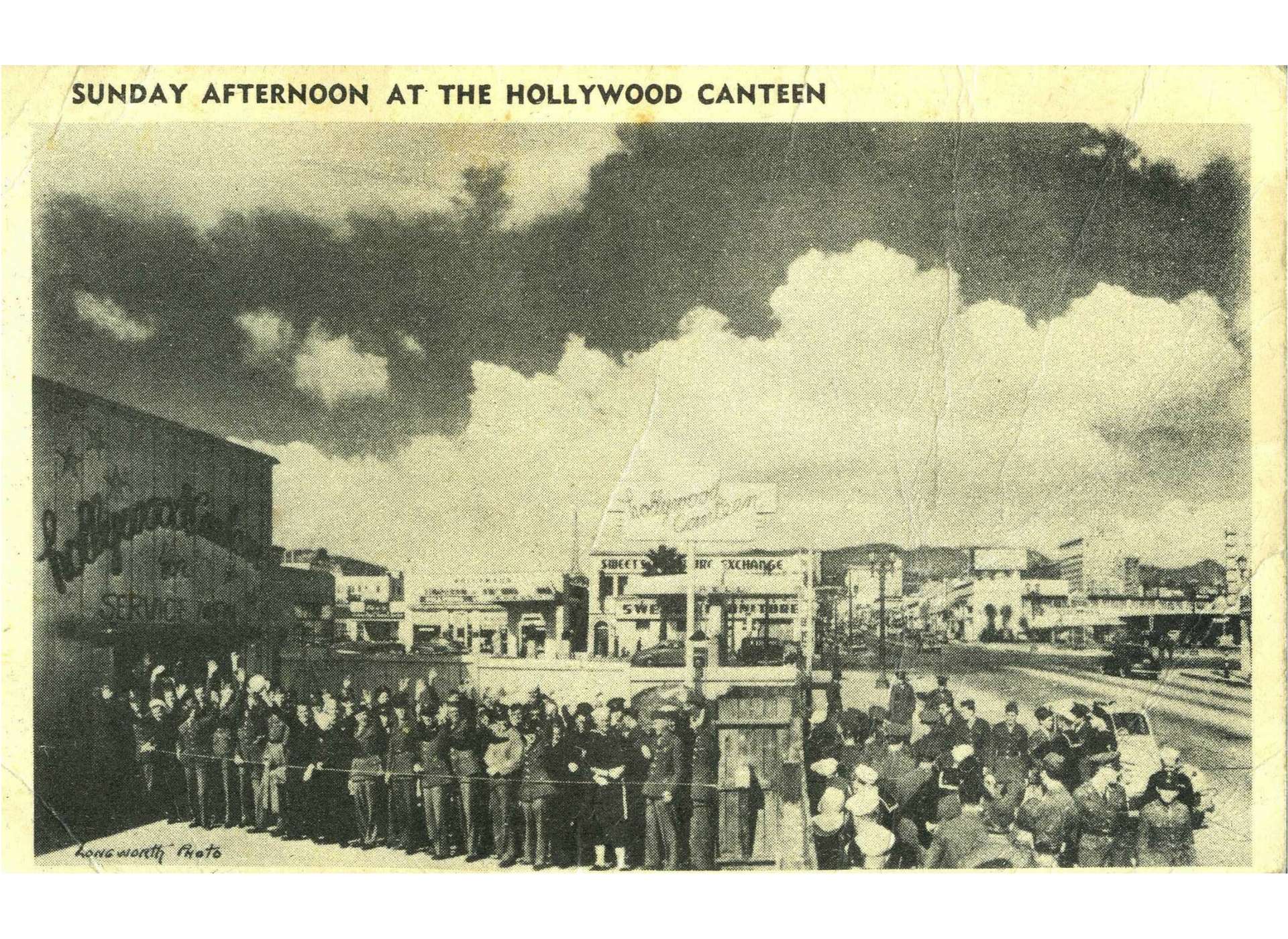On October 3, 1942, the Hollywood Canteen opened its doors in a former livery stable at 1451 Cahuenga Boulevard in Los Angeles. Modeled after, and affiliated with, the Stage Door Canteens founded by the American Theatre Wing, the Hollywood Canteen became a haven for servicemen—a place where they could enjoy entertainment and dancing free of worry or charge. Young military guests to the canteen were often very far away from home, lonely, and starved for entertainment. The canteen provided a welcome respite from the pressures of a world war.
The Hollywood Canteen, like others, was staffed completely by volunteers. But in Hollywood, the volunteers were often famous celebrities. Servicemen could dance with Betty Grable, be served a sandwich by Shirley Temple, and watch a performance by Carmen Miranda. Roy Rogers even rode his horse, Trigger, right onto the stage for some prancing tricks. The canteen provided an outlet for stars anxious to contribute to the war effort in the best ways they knew how—their trade as entertainers. Many Americans who had the pleasure of experiencing a night at the Hollywood Canteen never forgot the famous individuals they had the chance to meet. Those famous canteen staffers long remembered serving the servicemen who were sacrificing much more than their time in the fight for democracy.
Actors Bette Davis and John Garfield were the driving forces behind the establishment of the canteen, and Davis became its president. She was at the peak of her career in the early 1940s, and went on to earn 10 Academy Award nominations. On opening night, the Hollywood Canteen raised $10,000 by charging the civilian public $100 each for bleacher seats to watch as star volunteers paraded in. Davis recalled it was so crowded that she had to climb through a window to enter.
"There are few accomplishments in my life that I am sincerely proud of. The Hollywood Canteen is one of them."
Bette Davis, 1987
Just 10 days after the canteen opened, Bob Hope broadcast his top-rated radio production, The Pepsodent Show from the Hollywood Canteen. He performed bits with Davis, and members of “Hope’s Gypsies”—the troupe of entertainers who accompanied Hope on his tours to perform for troops on the front lines in Europe and the Pacific during the war—made appearances. It was the first of many Hope performances at the canteen. He even volunteered in the kitchen washing dishes.
The décor of the canteen played on the building’s history as a stable by employing a western theme—the sign was made of rope lettering and chandeliers were constructed from old wagon wheels and retrofitted kerosene lanterns. Celebrities pitched in with decorations and furnishings as well; the piano was donated by Cary Grant. On the first anniversary of the Hollywood Canteen, Davis unveiled the Hall of Honor, a wall of photos of Hollywood figures who served in the military, featuring the likes of such A-listers as Clark Gable and Jimmy Stewart.
On October 23, 1943, Davis wrote Bob Hope a thank-you letter, on Hollywood Canteen letterhead, expressing gratitude for his contributions to the canteen.
In 1944, Warner Bros. produced a film called Hollywood Canteen. It was a fictionalized account of two soldiers’ experiences at the canteen, in which dozens of stars played themselves, volunteers for the war’s entertainment efforts. The film starred actress Joan Leslie, but also featured three numbers by the popular Andrews Sisters. Hollywood Canteen was the fourth highest grossing film of 1944, with 40 percent of the proceeds contributed directly back to the canteen.
Before it closed on Thanksgiving Day 1945, over 3,000 volunteers, many famous stars among them, entertained nearly four million servicemen. Three million packs of cigarettes were distributed; six million pieces of cake, 125,000 gallons of milk, and nine million cups of coffee were served. When the Hollywood Canteen closed after the war, the $500,000 surplus was applied to veteran relief funds. Bob Hope was one of the many celebrity entertainers who recognized and entertained those in America’s fighting forces.
-

Letter from Bette Davis to Bob Hope: The National WWII Museum, 2008.461.001
-

Postcard of the Hollywood Canteen: Gift of Cherie Messore, 2006.046

BB's Stage Door Canteen
Take in a show at the Museum's 1940s-themed entertainment venue.
Kim Guise
Kimberly Guise holds a BA in German and Judaic Studies from the University of Massachusetts Amherst. She also studied at the Universität Freiburg in Germany and holds a masters in Library and Information Science (MLIS) from Louisiana State University. Kim is fluent in German, reads Yiddish, and specializes in the American prisoner-of-war experience in World War II.
Cite this article:
MLA Citation:
APA Citation:
Chicago Style Citation:











